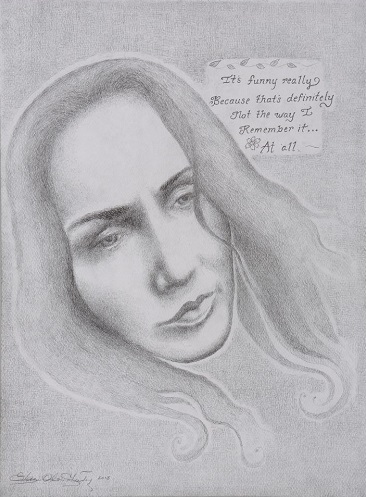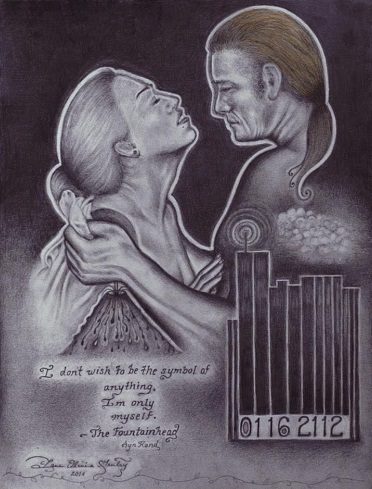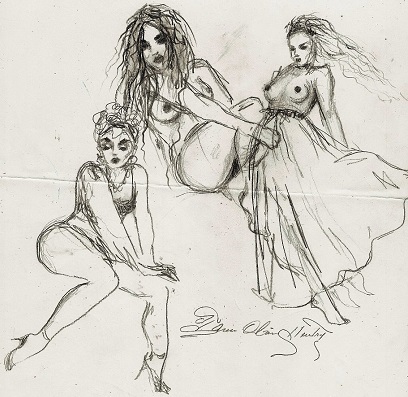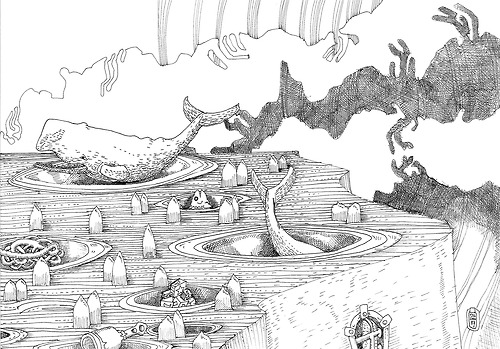visual art by Dave Dick
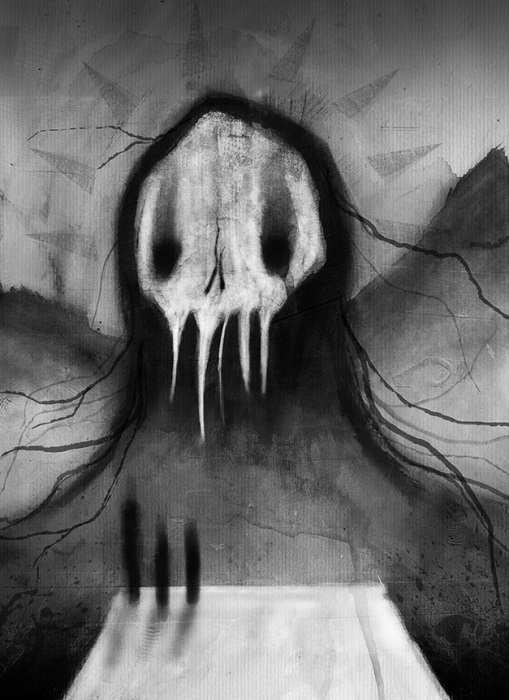
Seeking Low
David Herrle selections
Interview of painter Carrie Ann Baade for lOBURN Magazine (page 8 to page 25):
loBURN_Magazine_loBURN_Magazine_Volume_6_Fall_2015_
Interview of painter David Ulrich for lOBURN Magazine (page 64 to page 77):
loBURN_Magazine_loBURN_Magazine_VOLUME_5_Spring_2015_
SubtleTea interviews:
David Herrle interviews Todd Tarbox, author of ORSON WELLES AND ROGER HILL
David Herrle interviews Susannah Martin, painter
David Herrle interviews artist Lana Gentry
Bookolage reviews:
THE WOMAN WHO SMASHED CODES by Jason Fagone
MARTIN LUTHER: THE MAN WHO REDISCOVERED GOD AND CHANGED THE WORLD by Eric Metaxas
THE BLOOD OF EMMETT TILL by Timothy Tyson
MAKE TROUBLE by John Waters
THE ROAD TO JONESTOWN – JIM JONES AND PEOPLES TEMPLE by Jeff Guinn
Freelance Services

Having worked as a research librarian/proofreader and then as a technical writer for many years, and next to reading like a maniacal lifer in solitary confinement, keeping SubtleTea and Bookolage afloat and doing my own writing projects, I now offer freelance service in writing, proofreading, editing, content editing and manuscript consultation, which I’m currently expanding for a greater number of both amateurs and professionals. Clients can count on my many years of professional and private experience in the writing field. More details are below, or they can be relayed to inquirers by sending a message to sailthedaydream at subtletea.com.
Manuscript Consultation
My consultation is ideal for authors who want astute analysis, honest assessment and careful editing, proofreading and preparation of their material. The depth of service depends on each author’s need, for which fees are adjusted accordingly. Below are the four service packages I offer.
Fees are adjusted according to manuscript size and complexity, and refunds are given if the work is unsatisfactory. Payment is expected up front for shorter pieces, but 50% first and 50% later is the standard for longer work. In order to promote my unique brand among competing companies that offer such services, I’ve analyzed the average costs for clients, which are almost invariably very high, and worked out relatively discounted rates for my work.
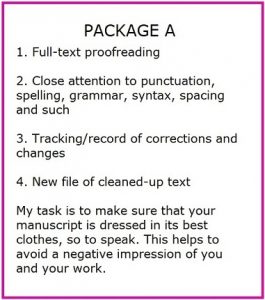
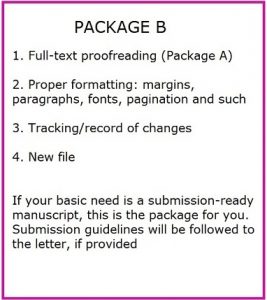
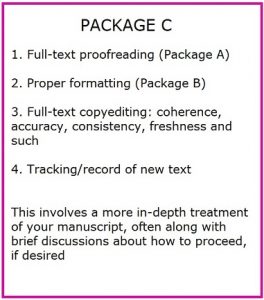
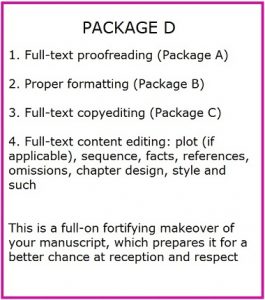
Authors may choose to send me a printed copy of their manuscript, or they may prefer to send a Word file to be printed by me (for a slightly extra fee), since I like to roll in the mud with the text – not to mention the fact that hard copies are better for cumulative notations and off-screen attention. I give manuscripts two to three readings in the course of the job, sweeping the text for grammatical/punctuation errors each time. In the final phase, after making corrections and changes in the electronic document (if requested by the author), I compose an outline-like assessment of the project, providing reasons for changes and suggestions for the author’s reference. ALL WORK IS KEPT CONFIDENTIAL AND NEVER SHARED WITHOUT PERMISSION.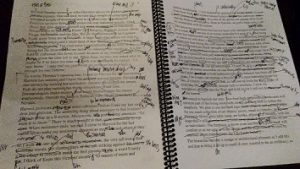
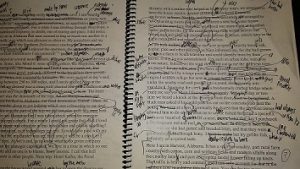
Miscellaneous Work
I also can edit, proofread and write for websites, blogs, papers and informal/formal documents.
Writing Submissions
I seek publications or individuals in need of feature articles, creative and contextual interviews, book/album/film/TV reviews and literary/scholarly essays.
Payment
Payment is generally done via PayPal and involves invoicing for clear records. Other reliable arrangements can be made upon request, of course.
Credentials and more CV information are available upon request.
David Herrle interviews artist Lana Gentry
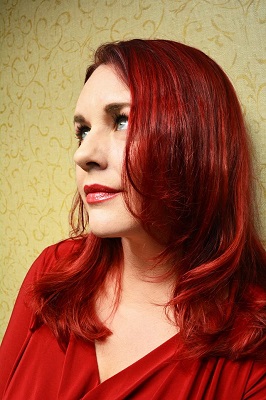 Lana by Kristy Evans
Lana by Kristy Evans
In “As Much Truth as One Can Bear” James Baldwin wrote that “the multiple truths about a people are revealed by that people’s artists – that is what the artists are for.” This is part of why I love to share the thoughts of worthy artists in my interviews. SubtleTea welcomes a particularly thoughtful and stylistic artist this time around: Lana Gentry.
DH: I’ve had many Muses, but dammit, I’ve never been a Muse. But you, you’re a living, breathing one! And there are hundreds of portraits of you done by artists from here to everywhere to prove it. You seem humble about being pretty, but let’s be honest here, you’re easy on the eyes (and a former model). Despite your response to praise, beauty is a game of both canvas and palette, and beautifying oneself is an art in itself. How and when did this enviable phenomenon of Musedom originate – and is it enviable? What is it like to see yourself through other artists’ eyes?
LG: I was far too round and short for any runway modeling. LOL. I did some pin-up stuff in my youth to survive. I don’t feel any shame about that. As far as the portraits go, in all humility, I have many friends who have been painted and drawn quite a few times. Of course it is true that I have amassed a few portraits. The real answer is that I do not know why the phenomenon is in full swing even now, but I have a few theories I will address in a moment.
First of all, I am not that easy on the eyes. I am rife with imperfections. I feel grateful to be presented in glorious ways: normal and defiling ways. I am not thin, I am not young, my teeth are crooked and gapped, I am not very tall. I stand at 5’3″. I meet no conventional standard of beauty. I believe the portrait phenomenon is comprised of a few things. I have always surrounded myself with creative thinkers. I always find myself commenting on artists’ works online, chatting them, hanging out with them in real life, writing about them, interviewing them, and sometimes creating portraits as well. I have a very strong connection to artists. I always have; it is a lifestyle. I came from a family of gifted artists. This was true in my immediate family and also my extended family. Both of my parents had amazing creative abilities. I would say the portrait thing has been going on for about nine or 10 years now, if you are referring to the online collection of portraits. I also have portraits of me done by family members and intimate friends, so in that regard, perhaps longer. I do not post them all, but I post the ones sent to me online or portraits the artists have approved for public consumption. I’ve lost count, but it currently exceeds 350.
DH: Despite my usual hesitation to classify stuff, I’d put your visual art somewhere between Lowbrow and Romanticism. Sensuous, but intellectually seasoned Art Nouveau, mixed with Sendakan fantasy, Surrealism, psychedelia, and an old-school political-cartoon vibe. It also has a slight Giulio Campagnola flavor. I like how you incorporate handwritten text (a la iconoclast Ray Pettibon and mystic William Blake), whether it’s an epigraph or something from your own mind. How would you describe your work? Why are you an artist rather than a lawyer or a riveter?
LG: Well I doubt very seriously I could ever pass the bar. LOL! Although I do enjoy a good debate. My art has been categorized in a number of ways. As classifications go, I hear more than anything else, self-taught or outsider art, folk art, dark art etc. My work has even been likened to prison art. My father was a convict at some point and an artist as well, so maybe that contributed. These categorizations do not offend me. I’m lucky anyone gives a fuck to hate or love me or my work. I’m not defined by classification. I see my own art as more of a personal type of journaling. When I am inspired by people or life events (both good and bad), I am inclined to document those experiences. Because my creativity mostly excludes conscious influences, I find it hard to categorize it myself. On the other hand, if people wish to categorize it for shows, reviews, articles and so on, I humbly accept any observations about what it is that I do.
DH: I know you’re an admirer of Ayn Rand’s work. Like me, you seem to savor the honey and spit out the bees in you admiration. Sure, her puritanical rigidity, rude infidelity, apparent inability to admit failure, and reduction of fallen-short folks to infidels are turn-offs, but her foibles remind us that even anti-utopian utopians aren’t perfect. I think much of the vehement bashing of Rand (often by lazy bums who haven’t really read her stuff) borders on psychosis. Often she’s mistaken as a Libertarian (an affiliation she despised) or a staunch conservative, while she was anything but and would hiss at GOP pols (“the hippies of the right”) who mix lukewarm Objectivism with collectivist compromise and religion (also despised by her) in their flimsy rhetoric and actions. I think she was ever tormented by America’s muddy waters of morals, economics and politics, fearing a repeat of what the Bolsheviks wrought in her native country.
Bottom line: she said that “there’s no such thing as a worthless human being – unless he makes himself such.” What is your attraction to Rand, Lana? How do you react to folks who criticize that attraction? How do parts of her philosophy influence you?
LG: Yes I definitely agree that her native country and what she observed had a profound impact on her life and work. I stumbled upon her philosophical fiction in my early twenties and I always saw much of what I did enjoy as more corroborating than influential. I think once her name became affiliated with certain circles (as you have mentioned) this amped up the hatred for her, although this hatred always existed for reasons explained in her works. Her works in fact are about that very hatred that exist in men who have a particular distaste for the individual. Rand’s radical and obvious ideas reject mysticism and blind allegiance to anything.
I like the term “savor the honey and spit out the bees”. I do not agree with everything Ayn Rand ever said, nor can I necessarily be in keeping with the stark manner in which it could sometimes be delivered. She was hotheaded on occasion while struggling to have a clear view of reality. She was human. She was passionate and although she fought her emotional side, she did have one. She had emotions, although she did not believe they were a good instrument for measuring right from wrong. Having said that, I do admire a lot what she has written.
To understand my deep appreciation for many of her quotes and writings, you would have to understand my dark past. I’ve lived in the prison of poverty, addiction, and homelessness. I’ve lived among people who were violent and absolutely unaccountable for anything. There was a lack of reason in my household growing up. Although I love my parents and have made peace with both my living father and my deceased mother, I yearned for stability and accountability. They had virtues and vices like all parents, but I longed for the opportunity to change my reality. It was confirmed through some of the writings of Rand that I did not have to submit to a life of masochism and servitude. In my case I had a mind and an unrelenting fervor to escape my misery and I knew that I could. The thought of taking control of my life to the degree that I could, was frightening but also invigorating and exalting. All the women I have admired have been women who have stepped around obstacles to achieve their goals. These would also include Oprah Winfrey, Eleanor Roosevelt, Martha Stewart, Wendy O. Williams, Camille Paglia, Radcliffe Hall, Jeane Kirkpatrick, Virginia Woolf, and so on. I’ve always been drawn to tough women. I like the ones who step out of line to proclaim their existence.
I don’t bother much anymore with the criticism railed at me for appreciating some of Ayn Rand’s work. Mainly because it is so obvious that many of the people criticizing me for appreciating certain aspects of her work have based their contempt on non-contextualized quotes, false quotes, agenda-driven motives, and blatant misunderstandings. They rarely venture into the realms of true philosophical debate. Some do and some genuinely disagree philosophically. I can respect opposing views. I cannot rightfully assault people or deem them inept for disagreeing with me while simultaneously requesting their respect for my views. When certain people make an attempt to engage me though, it usually takes hours just to unweave the tapestry of lies they’ve been fed. They just call me names, and post links to bullshit sites.
Here is a dismantling of some myths that exist about Ayn Rand: Ayn Rand did not support a military draft. Ayn Rand did not revile poor people. Ayn Rand did not support the idea of not collecting social security or disability. This myth has been used to create an illusion of hypocrisy by saying she was a hypocrite for receiving Social Security. First of all I’m not sure it was ever firmly proven that she collected Social Security, although I would not doubt it. She was a part of that system by virtue of living in America. Secondly, it is reiterated in her material, that men who have contributed to society and had their funds taken by legal force through the IRS, deserved the opportunity to reclaim some of what was rightfully theirs. What I appreciated about her work was the idea that blaming others was unfruitful, using emotions as primary tools of cognition was dangerous, and her shining a light on the idea that the world was filled with people who were driven by jealousy, undeserved power, and the need to destroy genius. She acknowledged other malevolent forces, which have historically and consistently crumbled societies.
Ayn Rand was a staunch atheist, and she constantly rallied for a separation of church and state. She was pro-choice as well. She did not view the “rape scene” as a rape scene in The Fountainhead. She was creating a scenario of tension and passion. She wrote one of the best essays I have ever read about the stupidity of racism. She opposed nepotism, monopolies and cronyism. She believed that money was not the corruptor of man: that he was either immoral or he wasn’t. These are some of her virtues, not vices. But you never read about these online. You read about her associations to Libertarianism and Conservatism. She had very strong views that opposed so many ideas in all parties. Was she perfect? No she was not perfect. But I say show me your heroes, the personalities behind any kind of art, writing, acting, or anything else that you admire. Show me your music collection, your most appreciated books and films. Show me your heroes and let me do a background check. Let me then decide if I deserve to be spoken to the way people have spoken to me online about quoting Ayn Rand. I no longer discuss it online, not because I am afraid but because it is an exhausting full time job that creates a lot of division, rage and misunderstanding. If you hate me for appreciating the works of any artist, writer, poet, philosopher, musician or whomever, that’s too bad. Open up that indoctrinated steel trap you call a mind. Better yet, go fuck yourself.
DH: Despite its flaws, Atlas Shrugged, the culmination of Rand’s ever-reiterated moral philosophy, belongs up there with books such as 1984, Brave New World, Fahrenheit 451, The Wanting Seed and A Clockwork Orange. The novel’s central hero, John Galt, is the apotheosis of the author’s deepest fetishes and highest ideals, including her girlhood crush on The Mysterious Valley’s iron-willed Cyrus Paltons and The Fountainhead’s Howard Roark. However, Galt is the most boring element in the novel. Rand considered art to be “a concretization of metaphysics,” and I think he is only that, not a character. “You don’t exist,” Rand wrote to herself in the 1920s.“You are only a writing engine.” Galt is an Objectivism engine, a capitalism engine, Rand’s statue-like savior. “Who is John Galt?” All A, no non-A. No nuance, misgivings or ambivalence.
I know that you prefer The Fountainhead to Atlas Shrugged, and Howard Roark, Galt’s more-blooded prototype and analogue (naïve idealization?) of architect Frank Lloyd Wright. (If anything, she should be recognized for being perhaps the strongest endorser of modern architecture and Wright’s renaissance in the last century.) Tell us about your love of The Fountainhead and your hots for Roark. Does his uncompromising defense of creative integrity affect your own artistic ethos? Also, spiel on the significance of your Ugly and Reprehensible piece, which features a nude self-portrait flanked by the heads of Rand and the intellectual heir, Dr. Leonard Peikoff.
LG: Many anti-Capitalists are still enjoying Capitalism every day when they wake up. Of course they’ve not lived under Communist or tyrannical regimes. They stand at a distance with expensive lattes proclaiming the virtues of Communism or other evil methods of governing. They’ve not been blocked from selling or making their art or any fucking thing else. They haven’t been to prison or killed for making art. No one’s chopping their heads off for being female, atheist or gay. They aren’t slaves to tyrannical governments the way other people are. They think they are – but they aren’t. Those Neo-Americans, how they long to suffer as much as others do.
Everyone is A and non-A. I will not answer “Who is John Galt?” because it is the hook that leads to the book. As far as my preference, thanks for doing your homework. I do prefer The Fountainhead to Atlas Shrugged. It has a more natural flow in my mind. I am not so much influenced by Rand’s character Howard Roark, but, rather, I’m psychologically corroborated by the conviction and integrity his character held with regard to his own creative vision. He had no interest in duplicating existing works. He believed in an honest exchange among men and he chose to work in a rock quarry while maintaining those creative ethics on his journey. He rejected the notion of consistently working in his field until he achieved a state of no compromise.
Both books push the idea of creativity and original thought. They heed a warning about a world to come, that does not allow a man to simply be himself. The idea is that men have so often traded their individualism for collectivism under the guise of being noble. In The Fountainhead, there is a strong message about the rejection of collectivism versus the embrace of individualism. It rejects sheepish thinking which includes religion or any non-religious dogma that resembles it. The Fountainhead illuminated the idea that man’s personal desires, visions, and achievements had the right to stand on their own without contamination or compromise. I would think that even if people hated the works of Ayn Rand, that they could appreciate my appreciation for such an idea. Are these views popular? Well, fuck no they aren’t. Then again, life’s not a popularity contest. I wasn’t put on this earth to kiss anyone’s ass. That’s not my view of a happy life.
You referred to the significance of my work Ugly and Reprehensible, which includes images of Rand and Peikoff. This came from a personal experience that happened many years back. I had drawn a very small portrait of Ayn Rand, and I believe I named it Patron Saint of Reason: replacing the religious, mystical figure with one of reason and rationality, Ayn Rand. My friend who was working with me at the time helped me send out letters to many galleries, organizations, collectors to bring light to my work. One such letter was sent to The Ayn Rand Institute because it was related. I knew that Ayn Rand as well as her followers had specific views on art. So I am accountable there. This was one area with which I never completely agreed with the Objectivists anyway. So Dr. Leonard Peikoff, an author, co-writer, intellectual heir and friend of the deceased Rand, returned a scathing and cruel reply via secretary that addressed my portrait, calling it “ugly and reprehensible.” I didn’t mind the “ugly” as much as the “reprehensible”.
That “reprehensible” cut me to the quick. It implied that I had some evil intent with regard to doing the drawing. He wasn’t an art scholar or instructor but reading those particular words would not have been easy coming from anyone at that point in my life. Since the organization was so firmly tied to the idea of individualism, it really seemed like a strange thing for him to say. So that’s why I did the piece, as an answer to what I thought and felt was a hypocritical and unnecessarily cruel note from Peikoff’s secretary, quoting Peikoff. I have since stomached much more criticism and it has trumped the criticism given by Peikoff. I am not unaffected by what people think, but I am much less affected by the things people think and say than I used to be. I understand that he has every right to his opinion, just like anyone, whether it makes sense to me or not. It’s an opinion. I had to also consider that he adored and knew this person. But yeah…whatever. I don’t hold grudges…much.
DH: What degree did you earn at Satan’s School for Girls?
LG: Well I didn’t earn anything really. It was all in jest. Since I already had a heavy fan base of Satanists who were completely convinced I was a witch, I just went along. They all tell me you can be practicing witchcraft without even knowing it. After being alerted to the fact that Anton LaVey, founder of the modern church of Satan, was deeply influenced by the writings of Ayn Rand, it all started to come together. LaVey had apparently paraphrased Ayn Rand’s writings and incorporated them into the foundation of the church. Once I understood this, it was clear why any philosophical words from me, which held in part an Objectivist viewpoint, might be seen as Satanic. I have learned a bit about the history of Satanism from artist Stephen Leyba, who was anointed years back as a Satanic minister (by LaVey).
DH: Magritte said that worthy painters should specialize in images rather than ideas. Having a soft spot for art for art’s sake, I tend to yawn at political/moral works, especially preachy progressive or religious ones. However, when the frivolous reigns, I want manifestos. And I do reject art that only deconstructs or shatters ideas.
What matters most to you in your own art – the image or the idea, or is the dichotomy unnecessary? What does art ultimately mean to you?
LG: Some artists think that art has to have a purpose beyond producing joy in the eye of the viewer. Others think that art has a primary obligation to produce joy in the eye of the viewer. There are other interpretations that address the meaning of art and there have been since the beginning of art. I am not a scholar, but an artist. For me personally, art or creative writing represents and releases my thoughts and feelings. That’s it. Everyone is different. Even in my portraits of others, it becomes a way of laying myself bare and throwing back the world as I see it…or feel it.
Any benefits that may or may not come from it have little to do with what internally drives me to do it. I am just compelled to do it. That’s all I know.
DH: How far should an artist’s biography color his or her artistic reception? Can one can be in extreme disagreement with aspects of the personal lives and world views of artists, including actors, but appreciate much – if not all – of their work? David Byrne put it perfectly in his Bicycle Diaries: “My definition of what is good art…isn’t determined by the biography of its creator…At what point does the extra-creative activity of the person begin to make a difference in how we perceive their work?”
George Orwell nailed it in his incensed criticism of the ultra-controversial Salvador Dali: “One ought to be able to hold in one’s head simultaneously to the two facts that Dali is a good draughtsman and a disgusting human being. The one does not invalidate or, in a sense, affect the other.” How do you approach artists and their art (or art and its artists)? How do you navigate the glory and garbage?
LG: Ah yes, this is a question I have incessantly grappled with within myself forever. It should not differ really from public boycotts of businesses who support views we do not hold, and yet, often, art does. People will forgive certain artists any sin regardless of the weight of its seriousness. The artist as opposed to the art are not always as closely related as people believe. Some are, sure. Many argue that an artist’s work reflects his deepest held convictions and values. However, when you have seen that serial-killer John Wayne Gacy has painted a field of flowers or what might have been an entertaining, benevolent clown had we not known his nature, it gets confusing doesn’t it? Then you have some humanitarians making some of the most disturbing art you ever laid your eyes on. Artists, for instance, may use a swastika or a cross in a work, and if you don’t know them personally you aren’t sure if they are opposing, demystifying or endorsing these symbols.
Thomas Kincade was a very dark person. The Carpenters were dark people. Who knew? We don’t always know people because we know their art. We have to find our own lines. I can admire a work while despising, questioning or misunderstanding the artist. I can separate them – sometimes. LOL. It has to do with degrees of what we will and will not accept.
DH: Got pubic hair?* (Before you smack me and call me “masher,” that’s meant as a rhetorical question.) In my interview with the formidable painter Susannah Martin, I addressed the refreshing inclusion of female pubic hair on her nudes: “Despite my praise of artifice and mown flora, I applaud the tufts in Courbet’s Origin of the World, in any Delvaux or Magritte nude.” The persistent trend in the last 25 years or so seems to be the sunny patio rather than the shadowy thicket. What are your thoughts on bald versus hairy pudenda in art, fashion, even porn?
*inspired by the famous “Got Milk?” ad campaign
LG: Well I have to say that’s an odd question, but given how many vaginas I have included in my work, I’ll address it! People are far too freaked about vaginas in general. Friend, model, and horror-movie actress Erin Russ once referred in conversation to the overgrown yoni as a 70s power muff. LOL! She’s always had a brilliant turn of phrase and I found it rather hysterical.
Hair, no hair? I don’t care. As far as my own, I’d rather not make it a subject of public consumption here. I’m sure the vagina will make an encore in my own work again, because it is relevant in my symbolism. I never add it for shock, it just seems to communicate certain things that wax and wane depending on context. Porn? I dunno. For whatever reason, you can post images of art where people are sliced to pieces and people will nod with approval, which is fine. Show them a pussy in your art, and there’s a better chance they will lose their minds. A vagina is not only a natural part of the body; it’s also a powerful visual symbol, which I did not completely understand until I publicly showed works that included them. I find it shocking that people find them so…shocking! I don’t know. I didn’t invent the fucking thing or how people prefer to view it.
DH: William Blake saw women’s nakedness as God’s work. Artistic portrayal of the nude female began to surpass the Greeks’ Apollonian worship of the male form during the Renaissance (despite Michelangelo and Leonardo), gained gusto with Rubens and kicked into high gear in the 18th and 19th centuries. Since that grand aesthetic shift the female body, with or without clothes, has been the default locus of beauty.
Of course, “a woman is closest to being naked when she is well-dressed,” as Coco Chanel said. The fashion industry is dominated by female models, who are scarlet-lettered for feeding a traumatic “female body image” that prompts Anna Quindlen to call for the Barbie doll to be slain like a vampire (yo, Anna: Barbie’s about the clothes, stupid). Along with Camille Paglia, I think fashion is high art. How do you view the bodiness of females in art, the woman as the gaze’s target, so-called body image and Barbie? Is fashion art?
LG: Well, I will start backwards. Yes, fashion is art. It can be bad, horrifying, good or great art of course. Fantastic fashion is an amazing thing. I love the work of Edith Head, Vivian Westwood, Coco Chanel, and the list goes on. As far as Barbie goes, I think that this rigid view is just one more manifestation of America’s ever creeping victim mentality. Barbie is a motherfucking doll. I had them, and they did not ruin my life or my self-image. Do I think it’s wonderful that we have a less narrow view of beauty in print and in toys now? Of course. It’s great. I just think all this shit about “If I played with a Barbie I always felt I had to look like Barbie” is fucking absurd. I don’t think people looked at stuffed Snoopy dolls and cried because they did not look like them, unless they were Furries (wink). I don’t think most little boys looked at Stretch Armstrong and cried and said, “I’ll never be like him!” I just fucking don’t. People say ‘But Barbie does not look real.’ Of course she doesn’t look real. She’s a goddamned doll for Christ’s sake. If you’re running around depressed because you never lived up to your childhood toys and icons like Wonder Woman, Superman, Spider-Man, or Barbie, you got some serious fucking issues, man.
By the way, the idea that the female form is more entrancing or beautiful than the male form is not seen through my eyes. Both men and women can be visually intoxicating and beautiful.
DH: What works of visual art (including films) rock your ass and roll your soul?
LG: Oh my God, too many to mention. I will only add a slice from arenas that are mostly familiar. I absolutely love the paintings of Dino Valls. I am a huge fan of Eric White’s paintings. I love [Frank] Frazetta’s paintings. Beksinski is incredible. I love the drawings of Paul Rumsey. I have an affinity for Maxfield Parrish and others from the Golden Age: Frida Kahlo, Yashifumi Hayashi, to name a few.
Films. Well, I love Blue Velvet by David Lynch, Terry Zwiegoff’s Crumb, Wernor Herzog’s Grizzly Man, The Machinist directed by Brad Anderson, Heavenly Creatures by Peter Jackson, Murderous Maids by Jean-Pierre Denis (and its English remake, Sister My Sister), anything [by Alejandro] Jodorowsky, Brother’s Keeper by Joe Berlinger, Four little Girls by Spike Lee, as well as other stuff he’s done, anything by Alfred Hitchcock, anything by David Cronenberg, and on and on and on… I also am a gigantic fan of so many documentaries. The brilliant editorial process involved in presenting a particular view is such a fascinating art form.
DH: You also write, mostly short stuff – including memoirs, embellished memoirs, dreams, brutally honest observations, and weird but insightful – even koan-like – vignettes. Some kickass lines from some of your stuff: “You can’t choose true suffering. It chooses you.” “No flesh falling from the bone could have ever made you one drop less beautiful to me.” “It’s time to wash all this deceptive sand and molasses from my motor and get the fuck on with it.” “Never was I more empathic than in that moment that I crawled onto and inside of her, to feel every vapor of what she was feeling.” “A man is such a fragile creature. The most fragile creature on the earth.”
LG: HEY! I resent the fuck out of that “embellished memoir” comment you tried to slide in on me! Did I write all those? Thanks for reading them back and thanks for your kind words, sir. I stand by them all.
DH: You also jam poetry here and there, and I noticed that all of your poems rhyme. Is that a natural inclination, or is there a particular reason? Have you ever thought of compiling stuff for a book? Also, spiel about your favorite authors and their works.
LG: They don’t all rhyme but my mind has always easily pulled together rhymes. It’s a compulsion to quickly organize words in a certain manner – and a compulsion for my hands to dance quickly across the keys when I release them. Some people find poetic rhyming archaic, flowery, or childlike. I can only say I love to do it. I love the perfection and lost floral notes of Edgar Allan Poe. I love the metaphor and order of Emily Dickinson.
Books are great. You already know I love The Fountainhead by Ayn Rand. I love Presentations of Gender by M.D. Robert J. Stoller, Phantoms of the Brain by V.S. Ramachandron, My Dark Places by James Ellroy, Disco Blood Bath by James St. James, The Power of Positive Thinking by Dr. Norman Vincent Peale, How to Win Friends and Influence People by Dale Carnegie – so many. I guess it becomes obvious here that I am inclined to non-fiction and true crime, although I have enjoyed some great fiction too.
With regard to a book about me, I have been approached by an artist and keen thinker about doing a limited edition of books that reference me and my projects and life. We’ll see how it goes.
DH: You’re affiliated with loBURN magazine, and your most recent contribution is an interview with the inimitable R. Crumb. Like bizarre greats such as Daniel Johnston and Tomi Ungerer, Crumb deserves his cult following and heavyweight title in underground-art history. What a fortunate opportunity. And, as I can testify, you didn’t waste it – the exchange was excellent. How did you convince such a private and discriminating artist to agree to the interview? And what was it like to conduct a dialogue with such a maestro? Tell us about how you became involved in loBURN and some of the other worthy artists you’ve met and/or interviewed.
LG: Yes loBURN is a quarterly, independent magazine where I can express myself with ease because there aren’t many hard fast rules. I am grateful to do some writing and editing there. Some of the notable artists I have interviewed in the course of my life are are Joe Coleman, Norbert Kox, Pamela Wilson, Chet Zar, Chris Mars, Paul Rumsey, Dave MacDowell, Paul Booth, Laurie Lipton and so many more.
I write about things and people that interest me. Other creative people also contribute to loBURN: Tatomir Pitirui, Hope Bellgren, Abe Weinstein, and Allisun Talley as solid staff – and many other fluctuating, recurring contributors. It’s a labor of love.
I’ll address Crumb here. He definitely deserves his place and then some. I did not get an immediate reply when I contacted [him]. He usually does only extremely visible and occasional interviews at this point in his life. He made me fight for the interview, which I appreciated. I was persistent, and he eventually asked me to pitch it while saying he would likely not do it. I could only pitch it by telling him about my strange life and why his work had always been inspirational to me.
There was a fascinating back-and-forth process that took place in my trying to get that interview. It was the one interview that I was steadfastly compelled to do. I’m a huge fan of the work. I am a huge fan of his courage, which is unconscious and immediate. I am a huge fan of the way he loves and worships his wife. There is a subtext there between the lines of his “deviant” (if you want to call them that) or natural thoughts and expressions about women, a subtext that contains his adoration of his wife. There is also an open expression from Crumb about the amazing attributes of Aline Crumb. She is also a wonderful artist, a brilliant thinker, and hysterically funny. She seems to completely accept him as he is no matter what he says, thinks or creates. His observations and fleeting thoughts about women or anything else don’t seem to incite any disdain in her. She is powerful. This is my view anyway. I think he is incredibly honest and she encourages him to be honest among other things. They have an impressive simpatico.
Robert Crumb is iconic, not just as a comic artist, but as a living monument to truth and fearlessness. Like so many before me, I just can’t even begin to express what an inspiration he is as an artist and thinker. I think every artist should see Terry Zweigoff’s and David Lynch’s documentary, Crumb, and, of course, they should explore his work in other ways.
DH: Death is always on my mind. I don’t fear it as much as I resent it. The “death is part of life” platitude seems unacceptable, and I feel that mortality is something very wrong in existence. However, I often envy the majority’s daily suppression of this monumental anxiety. Is denial of death the nucleus of most human activity? Do you fear and/or resent death?
LG: I don’t know that it is really suppression, but maybe it is. To engage it too much while living can obviously be unhealthy. I had a tremendous fear of death in my youth perhaps because my mother died young. I am not without fear I suppose, if I obsessed on it. I’ve been close to death, and that brought me closer to understanding how the mind can hand it over and be okay sometimes. Tremendous physical pain or mental pain can make a person beg for death. That’s a morose answer, but it’s true. For me, considering ever-lasting life in one present consciousness…is much more daunting than the fear of death.
When I think of death, my greatest terror is leaving the world with too many unconsummated ideas trapped inside my head that will never come to fruition. This brings me to the resolution of willing my ideas to other artists as I am going (should I have that luxury, woe is me) and mandating that they gather to have a show of my visions as they see them after I’m gone. How grandiose and neurotic is that? LOL! Still, some other artist will steal that.
DH: Yet, there’s Joy, isn’t there? In one of my books I speak of an “Imperceptible Door,” a redeeming permeation of what appears to be a closed physical system of ultimate futility. Something you wrote reminded me of this imagery: “I’ve been knocking on a door, that’s not a door at all,/Knocking on a door that is a wall.” The great Chinese theologian and Christian martyr, Watchman Nee, claimed that we fight in vain to enter a room in which we already are in, that grace has already opened the door and let us in. “Think of the absurdity of asking to be put in!” Eldridge Cleaver spoke of an immortal, salvational spark inside all of us, “In the midst of the foulest decay and putrid savagery, this spark speaks to you of beauty, of human warmth and kindness, of goodness, of greatness, of heroism, of martyrdom, and it speaks to you of love.”
So, is there a door, Lana? Are we knocking needlessly instead of listening for a knock? Does a spark penetrate the Abyss? Please share your thoughts about Joy versus despair.
LG: Eldridge Cleaver had it right. Consider Anne Frank. I’m knocking on and listening to everything, whether it echoes or not. People tell me sometimes that I glorify darkness, when in fact I only acknowledge darkness. I don’t glorify it, nor do I ignore it. Life is comprised of joy and despair. Most people have that to reconcile, regardless of their situation. Funny that a life of mostly glory can sometimes create a vacuum of no appreciation. It can also make people ill-prepared for reality. When despair comes to knock, the one who has lived a life of mostly glory has no calluses, no preparation for despair. Each of these forces plays against the other in the course of our lives. I’ve had plenty of despair and tragedy. For me, it has made me a person who can be utterly enraptured by the scent of a rose or the brilliance of a dandelion. I’d like to also think that it gave me an infrastructure of reinforced steel. Not all events in life allow for such philosophy but it’s the best I can say. Perspective is everything. Despair can make one so very appreciative of joy. It can also teach us that the most humble and simple things in life, can be joyful.
By the way, thanks for letting me bend your ear in an online interview. It gave me a chance to speak my mind in an unfettered manner.
See more of Lana’s art here. Experience her via social media here.
Lana Gentry is a self-taught artist and writer who lives in Virginia. She specializes in graphite and colored-pencil drawings, and her work has been featured in many group exhibitions, including one in Shanghai, China along with art photographer Kristy Evans. to present a two-woman show in Shanghai, China. Her numerous writing credits include articles, interviews (particularly in loBURN magazine) and fiction (in Dire McCaine’s and D.M. Mitchell’s horror-story collection, A Dream of Stone). Learn more about Lana and her art here.
David Herrle reviews Marie Lecrivain’s THE VIRTUAL TABLET OF IRMA TRE
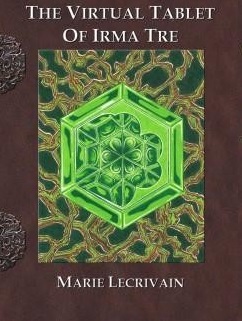
published by Edgar & Lenore’s Publishing House
Los Angeles, 2014
order the book here or here
I can spiel about many subjects somewhat handily, but alchemy is one that ultimately escapes me, or, rather, that I haven’t chased very far. The subject is never far away, however. One can’t be a fan of William Blake’s The Marriage of Heaven and Hell, or dig anything by comics-writer Alan Moore, Jacob Boehme, Eckhart (not actor Aaron), H.P. Lovecraft, Friedrich Schiller and Hermetically-seasoned Swedenborg without encountering alchemy. Also, lovers of Nietzsche can’t deny that his call for transfiguration, transvaluation and annihilation/re-creation of the Self involves the alchemical processes of solve and coagula: disintegration and reintegration, filling in the void of deconstruction with a better synthesis lest nihilism toss us into an existential trash heap. As Schiller wrote in On the Aesthetic Education of Man: “Like the chemist, the philosopher finds combination only through dissolution, and the work of spontaneous Nature only through the torture of Art.”
OK, maybe I can spiel on the subject with some vim, but I defer to author Marie Lecrivain as an abler enthusiast – or, rather, an in-the-know practitioner. I, frankly, haven’t the patience nor finesse to attempt a coherent book involving alchemy and such. (I’m much more apt to say “The philosopher’s stoned” than seek the Philosopher’s Stone.) However, my shortcomings on the matter aren’t what make me respect The Virtual Tablet of Irma Tre. It’s the fact that the book is smart and insightful, and it’s as simultaneously simple and deep as ABC – literally: the poem titles are in alphabetical order (which must’ve been a feat in itself). I like when an author’s particular style is applied to abstract ideas and grand universals, so I’m pleased that the book imparts Lecrivain’s own brand of the esoteric.
As I understand it, alchemy is essentially about finding and enhancing the Self, which is truly the final frontier, a dwarfer of oceans. The Self business requires one to go beyond where science can go. It’s about progress – and art. “Alchemy is evolution,” Lecrivain writes in a brief preface. For her “[t]he Universe is an ongoing experiment in alchemy,” and “everything [she does] is alchemy, including writing poetry.” This is benign poison against nihilism. There is a goal, a dialectical flow, a bright future, though all is cyclical and repetitive, as symbolized by the Ouroboros, the dragon/snake swallowing its own tail. (In typical thoroughness Lecrivain covers the letters O and U with poems entitled “Oroboros” and “Uroboros.”) A clip from “Trituration”:
Remember: All of this has happened before,
and will again. It won’t lessen the pain,
but it will put a smile on your face.
And in “Distillation”:
…This is the time to
focus on what, where, and who you become on
your next turn of the wheel, the centrifuge of
incarnation that separates the karmic detritus of
your past and future selves.
This reminds me of Nietzsche’s endorsement of (probably not belief in) “eternal recurrence of the same” and finding joy in everything that happens in a lifetime as if there are endless exact reiterations of it. However, that notion doesn’t allow for karma’s variability, prioritizes necessity over what he sometimes called mendacious idealism and rejects the possibility of a world-beyond (Hinterwelten). Lecrivain seems to appreciate both the given and the transcendent, and she celebrates the orchestration of existents, without the Nietzschean hierarchy of rule of the best. “We’re all grapes on the cosmic vine” goes a line in a poem called “Wine.” Just as unlikely, diminutive Hobbits determined the fate of Tolkein’s Middle-earth, even the smallest of earthly things is worthy and can enhance the universe, as shown in “Stone”:
Whether it be a boulder
on which to build our kingdom
or a pebble skipped across
the streams of time…
Even the cobblestones
have a great destiny.
Great destiny isn’t easy to accept, however. The Self is hard-won. As the closing caption in Marvel’s Amazing Fantasy #15 (featuring the origin of Spider-Man) says, “[w]ith great power there must also come – great responsibility.” Speaking of comics, I’m reminded of something Alan Moore said:
[Y]ou can almost understand the desire to simply wipe out that awareness [of being a Self], because it’s too much of a responsibility to actually possess such a thing as a soul, such a precious thing. What if you break it? What if you lose it? Mightn’t it be best to anesthetize it, to deaden it, to destroy it, to not have to live with the pain of struggling towards it and trying to keep it pure?
Moore’s words, in turn, remind me of “Iron,” one of my favorite pieces in The Virtual Tablet of Irma Tre:
In the blood of the spine, there’s a soul that
never breaks, whose blade never
rusts. Fortified with intent, it’s the weapon of your
soul. Use it carefully, with no
objections and never in anger. If you follow these
instructions to the letter, then
no one dares cross you in times of war or peace –
unless you’re a fool.
This unbreakable soul, this rust-proof sword seems to be what Lecrivain refers to in “Liquor Hepatis”: a wound-healing “unblemished fire of truth.” More from the poem:
You begin to see
at the soul’s atomic level,
the small and vast miracle of change
that happens without and within.
Transformation is sometimes traumatic, making the resulting pleasure that much better, the horizons that much wider, as expressed in “Cinnabar”:
You and I smash
Against the walls of our souls…
Exhausted and empty,
we carefully place
curious fingers into the cracks
of our fissured selves,
with tender appreciation
for new dimensions.
And in “Vitriol” (another of my favorites):
We never thank the ones who murder us…
We never appreciate the death of love…
until one day
we awaken, tearless
and excited, for the first time
in years. We rush to the mirror
and find a new face there to greet us…
The quest for the Philosopher’s Stone, the Ultimate Substance or the Self (the Great Work), what Alan Watts might call It, tends to be a trial-by-crucible that reaches denouement only after an Ingmar-Bergman-caliber spiritual mangling or even a “Hulking out,” as many fellow comic-book dorks might put it. (The cathartic, enlightened Self is likened to an erupting and annihilating Vesuvius in an Irma Tre piece called “Retort.”) However, though we may have to endure destruction and heartbreak in order to awaken to understanding and a renewed self, sometimes re-creation requires simply reaching out and bringing the poles of the spectrum together, tapping in to the moment’s music. In “Quintessence”:
…The connection
established, your voices ascend in song,
a sweet trio attuned to the vibration
of the Cosmos. There’s no need to prolong
the ecstasy from above or below;
from this perfect union will new life flow.
“Xanthosis/Yellow Phase” (the title cleverly covering the letters X and Y) continues the theme of reconciled polarities:
Intellectual/Intuitive
Rational/Mutable
Fearful/Courageous
Stubborn/Acquiescent
Logic/Passion
Peace/War
Word/Will
Compromise
Conjunction
Inspiration
Poet –
With that closing word we come back to Lecrivain’s claim about the alchemical nature of writing poetry, and, while I’m typing this, I realize that “compromise” and “conjunction” render “reconciled polarities” inaccurate. Perhaps, as Schiller would have it, polarities can never not be polarities. They can be made to hold hands but only stand politely side by side. In other words, to borrow from Schiller again, and to riff off of what Lecrivain seems to be saying, it’s not a matter of blurring opposites but one of harmonizing them – or, better yet, to quote Schiller directly this time, “the absolute including of all.” He saw one’s blindness to human dignity as the reason one is antagonistic to others, since she/he sees her/his own lowly self in others rather than seeing others, who should be treated with dignity, in himself.
If a soul takes so much to be realized, how priceless it must be. If Lecrivain is correct in saying the alchemical process is evolutionary, then it’s not an automatic, consciousness-from-accident, impersonal evolution. Anyone who really considers prehistoric cave paintings can see that the keenness of those early humans has been quite underestimated. How complex and persistent are human minds! Every individual (whether a boulder-person or pebble-person) has a chance to effect major changes in her- or himself and the world – and beyond. As an outspoken anti-utopian I usually wince at most reformative/progressive spiels, but I dig the idea of tending our own gardens: refining ourselves and promoting healthy metaphysical harvests so that positive things can happen on at least a local scale, perhaps creating an aggregate “awakening” to cosmic glory. The Virtual Tablet of Irma Tre has stirred and reinvigorated my thoughts on this stuff. For that I’m grateful.
I’ve addressed some of my favorite parts, but honorable mentions are due to “Egg,” “Hermaphrodite,” and “Fixation,” which contains this brilliant, enviable line: “Soon,/you’ll be asleep,/and when you awake,/you’ll always be a sleep.” A poem called “Geber” also caught my eye since I’m familiar some Geber and False-Geber. The best line in the poem: “He’s the pharmacist/who regales you/with tales of what happens/to the unwary who mix/SSRIs with chardonnay.” And “King” features an arousing pre-coupling of the King, “a man among men” with a crowned “rooster-shaped pompadour,” and an expectant Pre-Raphaelite-wet-dream Queen. She “manifests beyond the pale:/a vision in virginal blue negligee,” and “[h]is staff is at the ready.” (Is it getting hot in this review, or is it just me?)
The Virtual Tablet of Irma Tre may be the best of what I’ve read of Lecrivain’s work. She has an enviable knack for being able to produce quality books in a wide subject range pretty regularly. This latest work inspired me to take a fresh look at magic, alchemy, shamanism and other rich but very misunderstood – even maligned – stuff. Lecrivain celebrates it all via transformative poetry, a craft she loves, a craft of love, a (forgive me)…lovecraft?
P.S.: The book’s title, The Virtual Tablet of Irma Tre, nods to The Emerald Tablet of Hermes Trismegisatus (the Thrice Great).
David Ubben
David is an artist who lives in Switzerland. See more of his work here.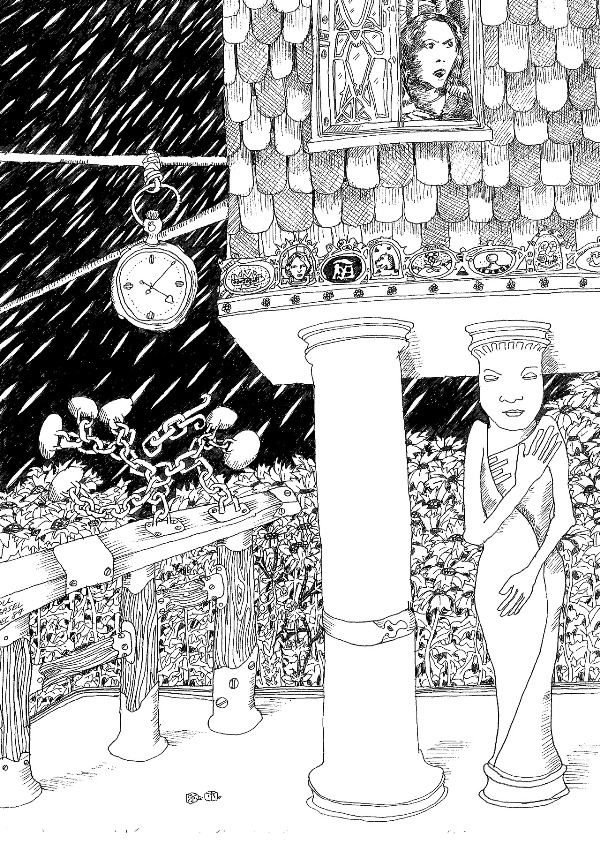 Supporting the Truth Lest We Fall
Supporting the Truth Lest We Fall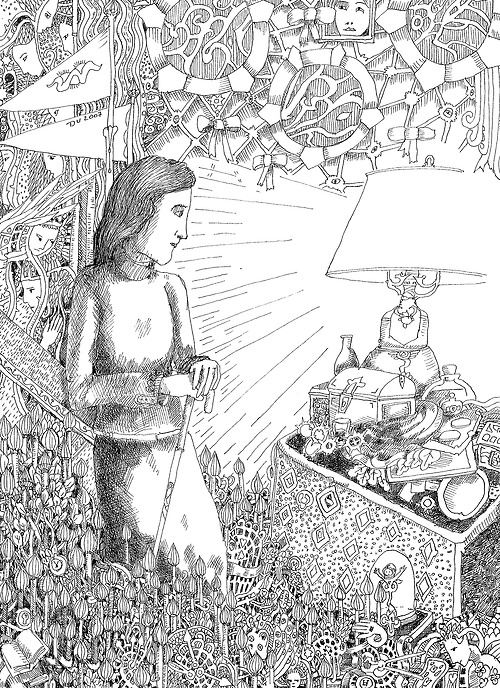
Edge of the Known World Looking Back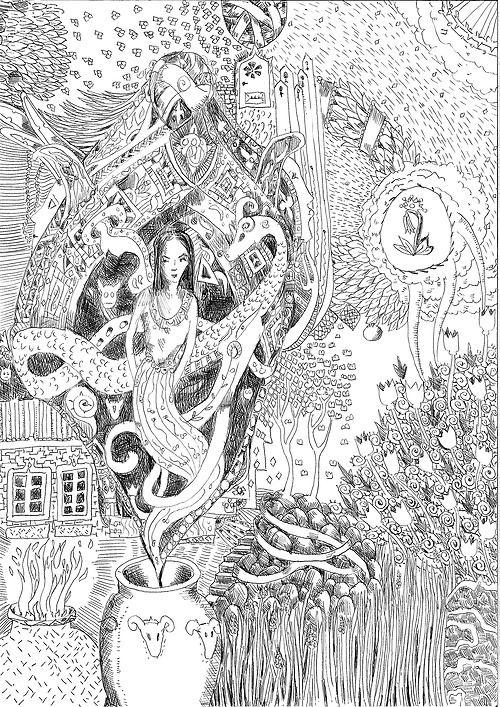
Escape of the Truth Into the World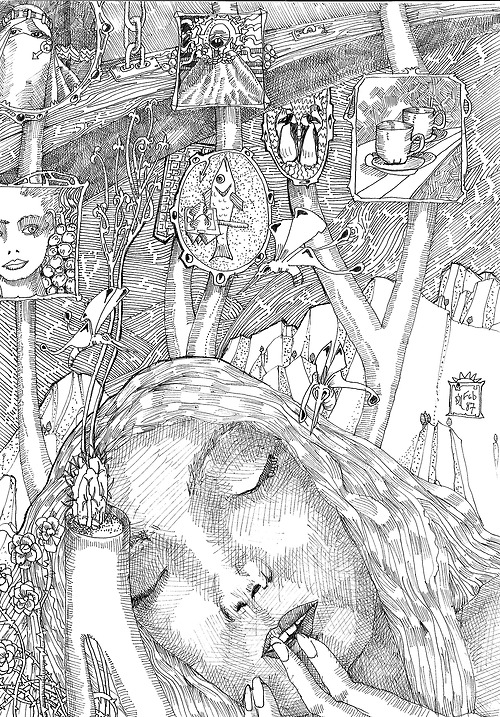
Trawling the Shores of REM
Rolf Gompertz
The Storyteller
60 people listen to my 45-minute speech at the Simon Wiesenthal Center, then stay for the Q&A session.
An older man sits at the far end of a row to my right.
As we finish, he leaves.
Moments later he reappears.
He is around my age.
He comes closer.
I see now that he is all choked up,
With tears in his eyes.
I wait for him to say something,
He cannot speak.
What do I do, what can I say?
I move towards him,
I give him a hug,
He hugs back,
We hold each other.
“Thank you,” he mumbles.
Looking at him, I ask,
“Holocaust?”
“Yes.” He nods and leaves.
What has touched him so deeply?
I will always wonder,
I will never know.
But something I said mattered.
We are all messengers to one another,
We touch souls. We matter.
We make a difference.
© Rolf Gompertz
Rolf is the author of several books, including A Jewish Novel About Jesus, Sparks of Spirit: How To Find Love and Meaning in Your Life 24 Hours a Day, The Messiah of Midtown Park and To Life! To Love! In Poetry and Prose, a Spiritual Memoir. He is a regular speaker at the Simon Wiesenthal Center/Museum of Tolerance.
Emily Strauss
Questions You Might Ask
How do these lizards know they live
on such a small mesa top
not much bigger than the public
library below in Chinle, and if
they venture too far, they will drop
1200 feet to the hot canyon floor
where they would undoubtedly be
crushed, food for a passing magpie
and how do they know that thirty miles
of desert floor surround their tiny
island, so that even if , miraculously,
they survived the fall, they would
never complete the walk to the next
sheltering crag before plunging night-
fall froze them in their five-toed tracks?
Emily is a semi-retired English teacher who lives in California.

